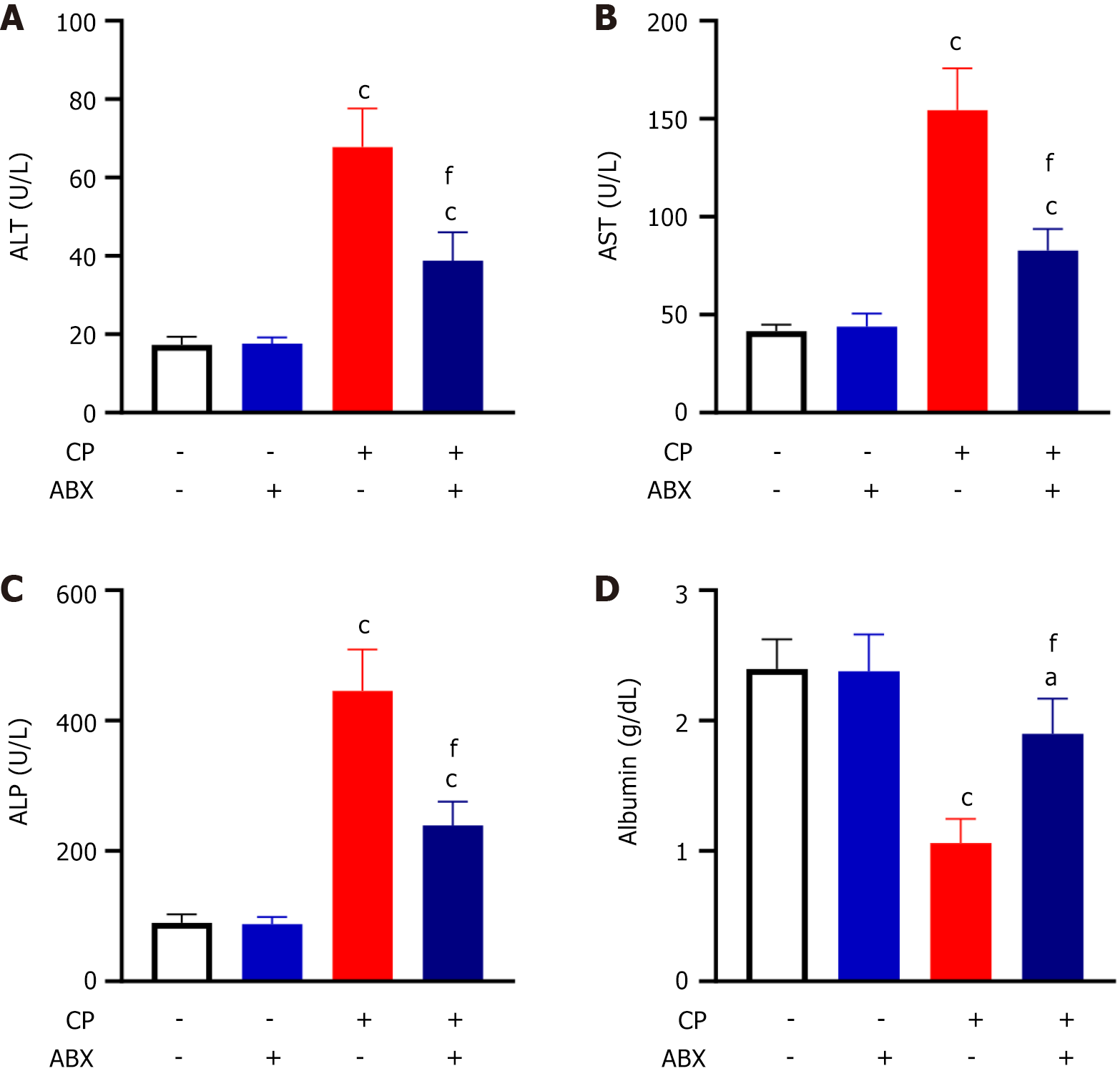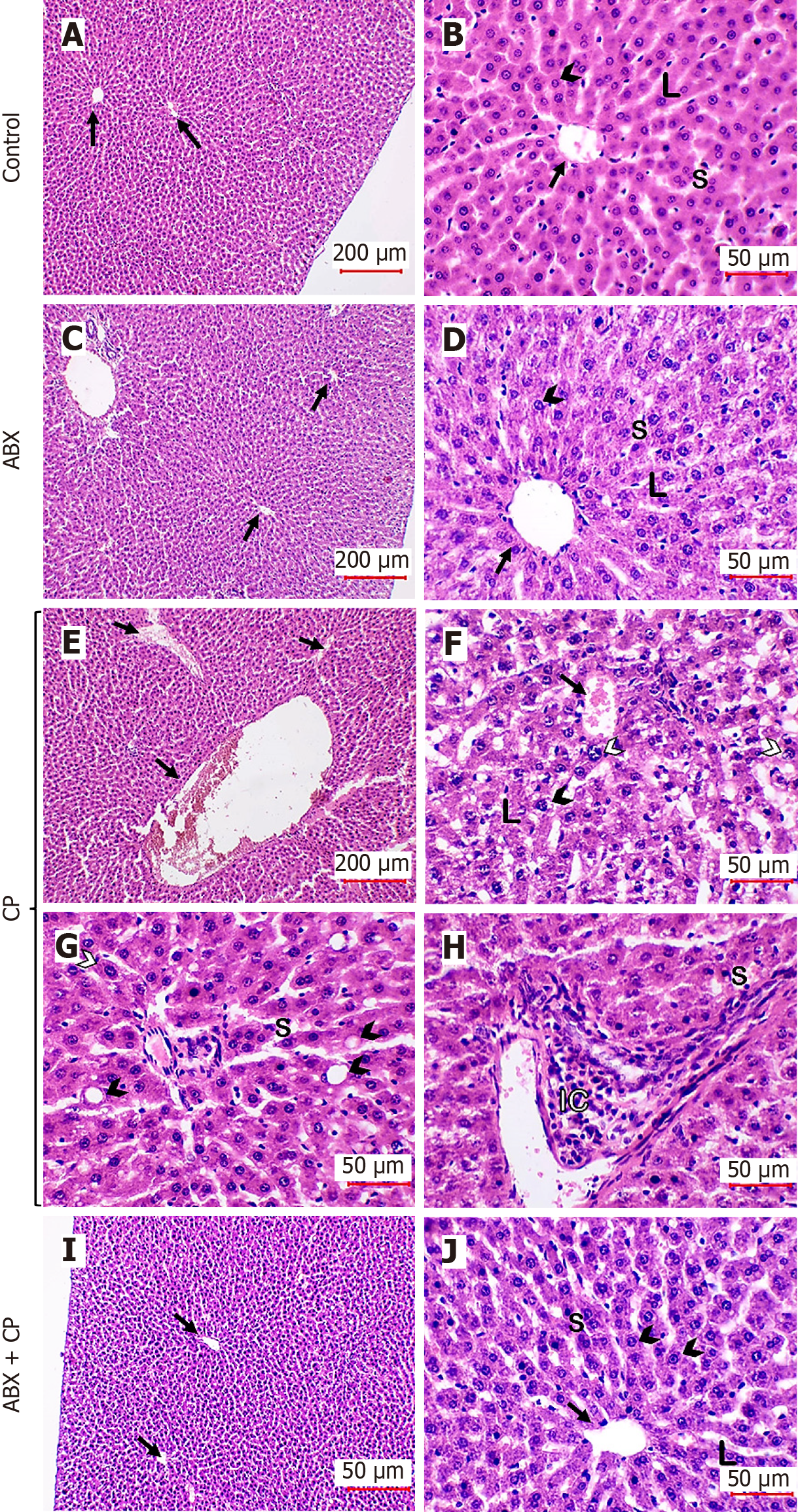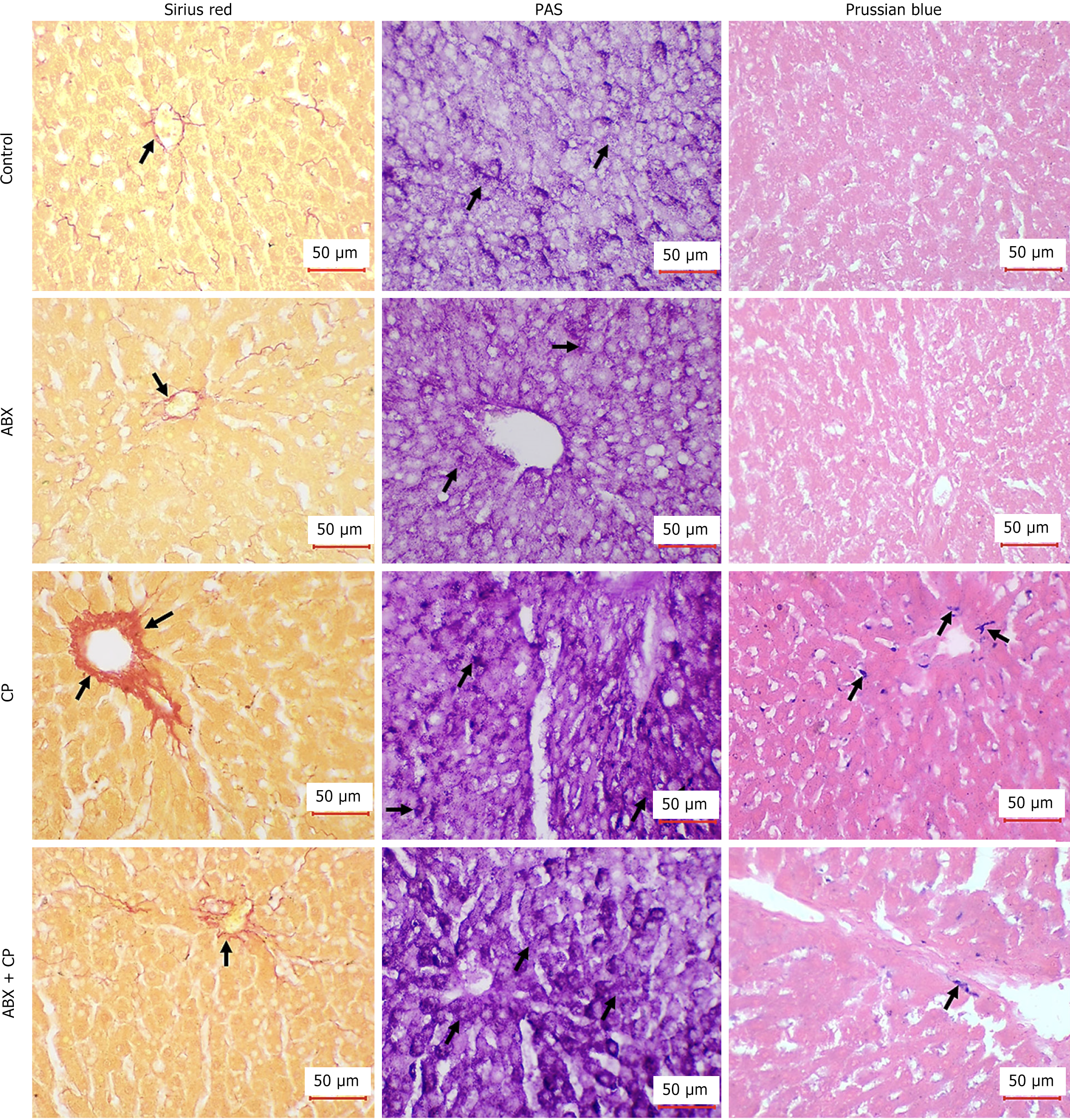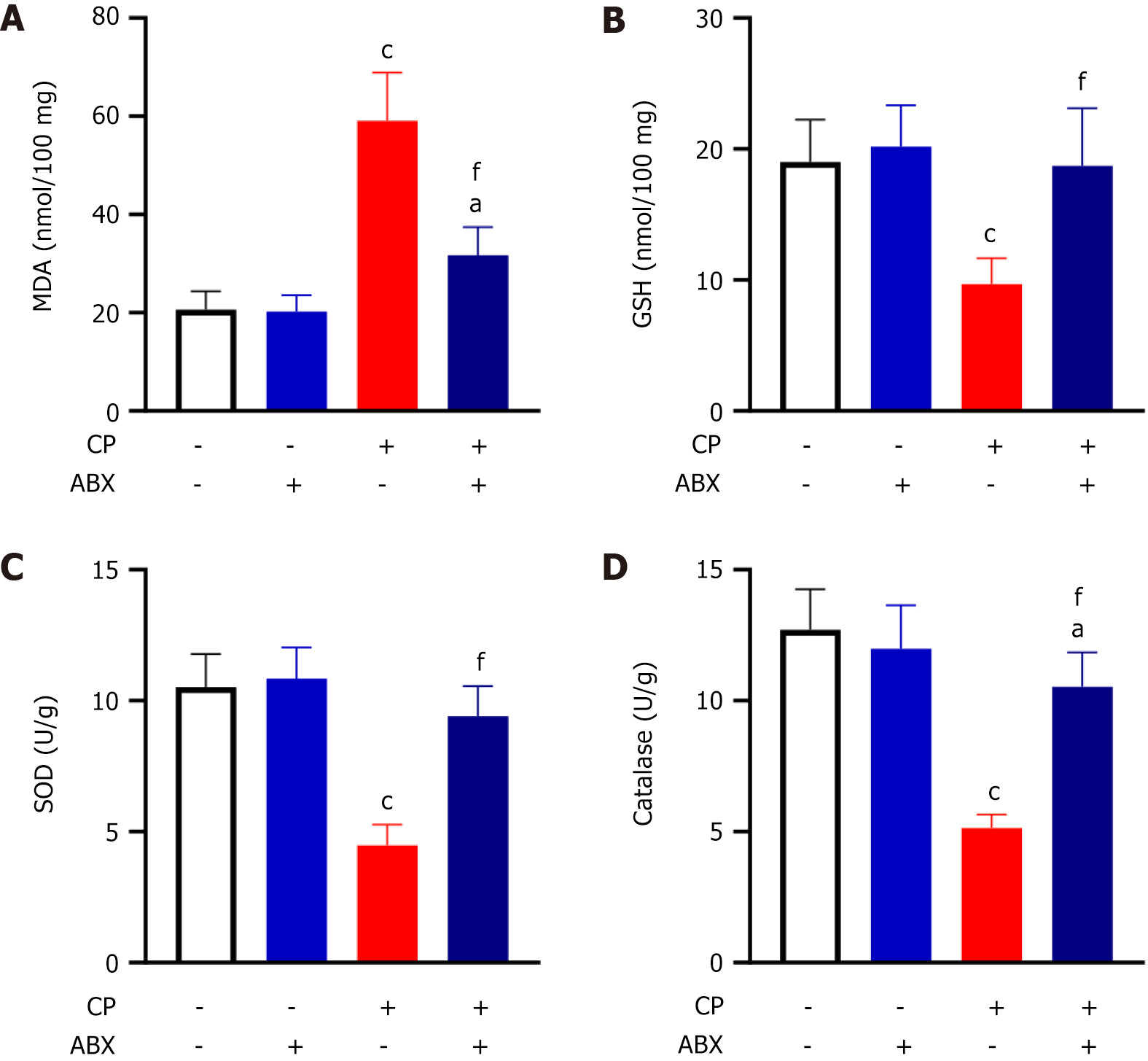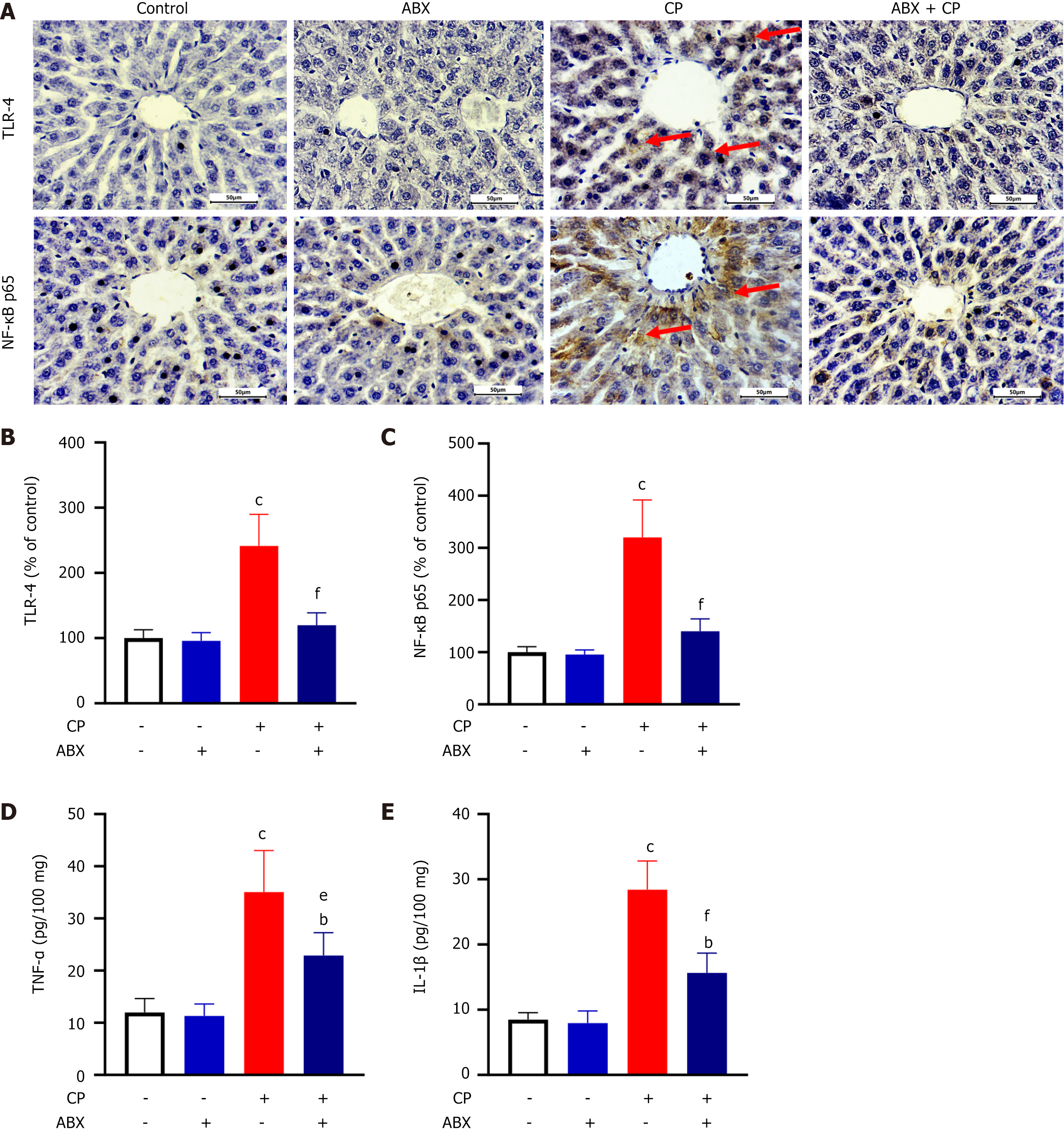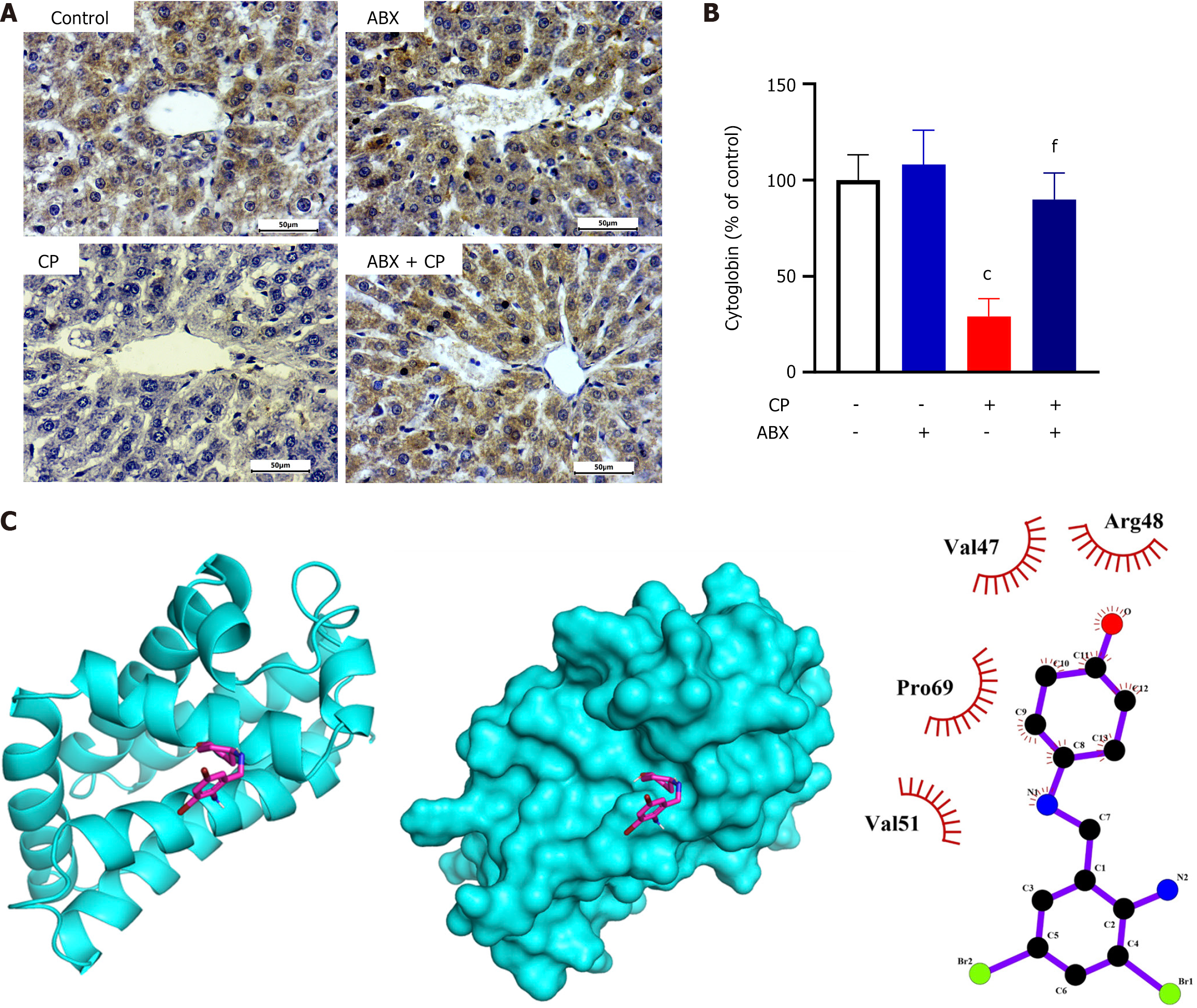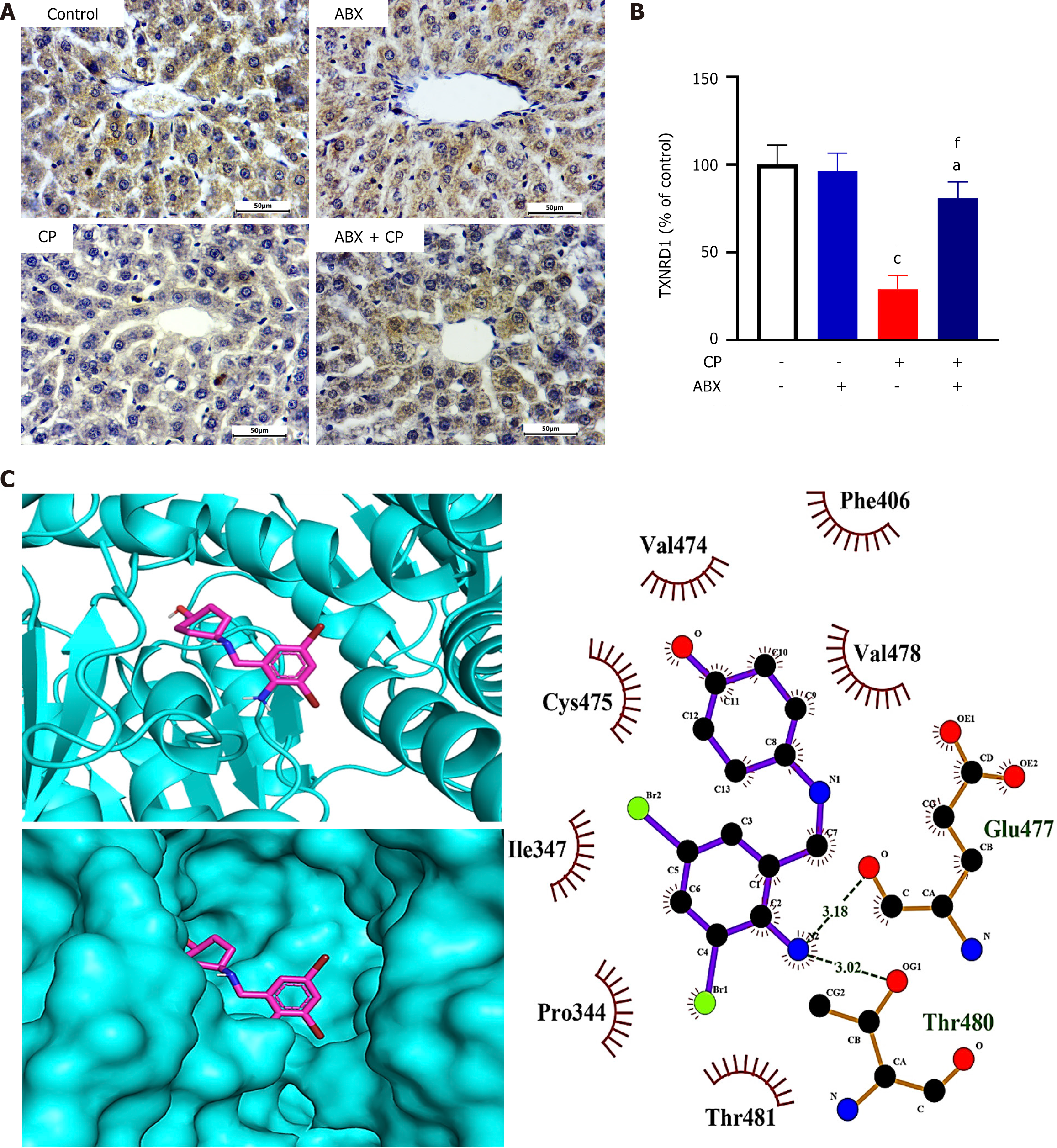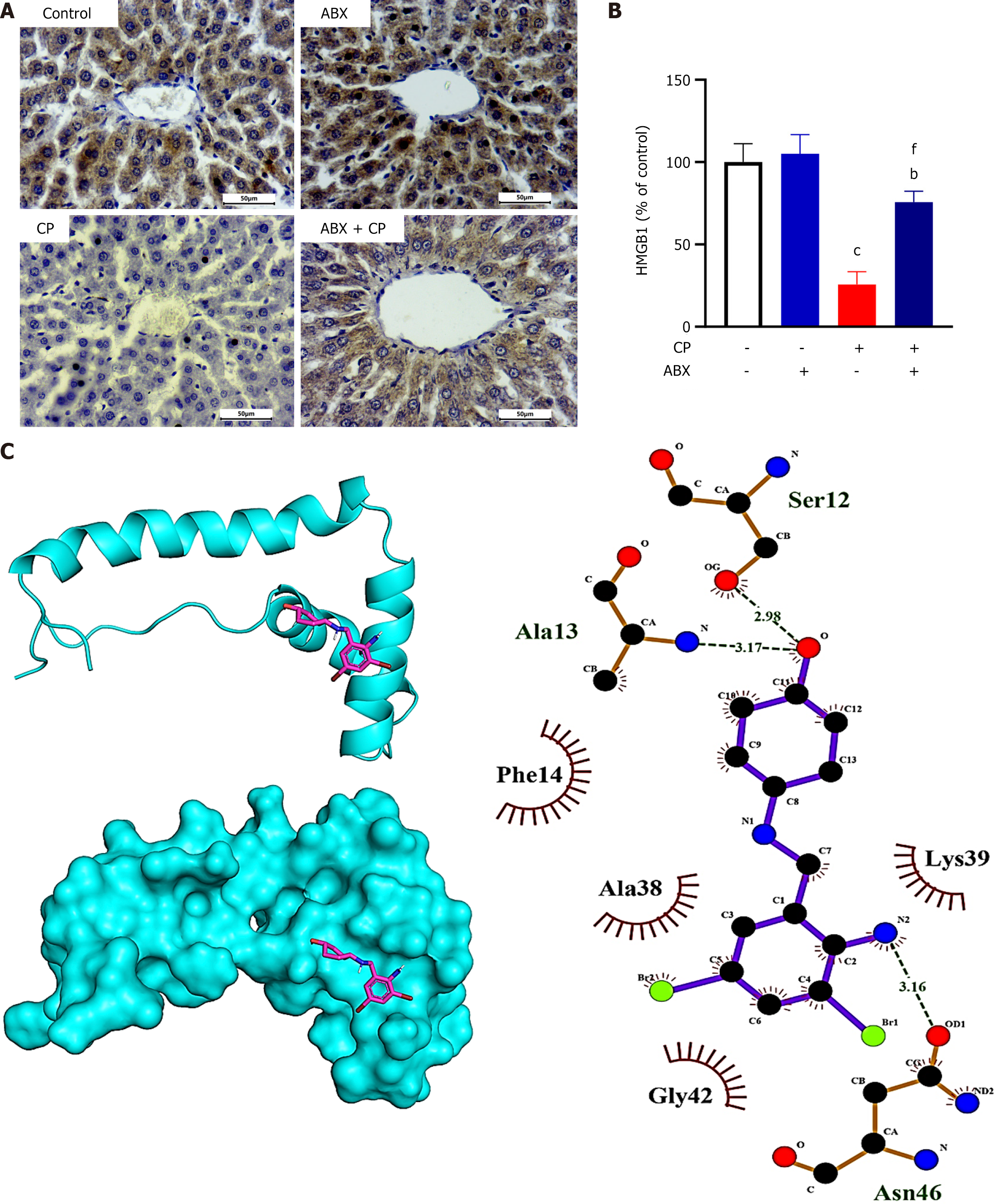Copyright
©The Author(s) 2025.
World J Gastroenterol. Sep 21, 2025; 31(35): 108139
Published online Sep 21, 2025. doi: 10.3748/wjg.v31.i35.108139
Published online Sep 21, 2025. doi: 10.3748/wjg.v31.i35.108139
Figure 1 Ambroxol ameliorated liver function markers in cyclophosphamide-administered rats.
A: Serum alanine aminotransferase; B: Aspartate aminotransferase; C: Alkaline phosphatase; D: Albumin. Data are expressed as mean ± SD (n = 6). aP < 0.05 and cP < 0.001 vs control group. fP < 0.001 vs cyclophosphamide. ABX: Ambroxol; CP: Cyclophosphamide; ALT: Alanine aminotransferase; AST: Aspartate aminotransferase; ALP: Alkaline phosphatase.
Figure 2 Ambroxol prevented liver tissue injury in cyclophosphamide-administered rats.
A-D: Photomicrographs of hematoxylin & eosin-stained sections from the control (A and B) and ABX-supplemented rats (C and D) showing normal liver architecture, including hepatocytes (arrowheads), hepatic lamina (L), central veins (arrows), and sinusoids (S); E-H: Cyclophosphamide-treated rats showing congested vessels (arrows), hepatocyte vacuolation (black arrowheads), enlarged hepatocytes with enlarged nuclei (white arrowheads), inflammatory cells (IC) infiltration, dilated sinusoids (S), and disorganized hepatic laminae (L); and I and J: ABX treatment prevented tissue injury and hepatic tissues relatively appear as control group showing normal non-congested vessels (arrows), hepatocytes (arrowheads), hepatic laminae (L), and sinusoids (S). A, C, E, and I: 100 × and scale bar = 200 µm; B, D, F, G, H and J: 400 × and scale bar = 50 µm. ABX: Ambroxol; CP: Cyclophosphamide; S: Sinusoids; L: Laminae; IC: Inflammatory cells.
Figure 3 Ambroxol prevented cyclophosphamide-induced collagen, mucopolysaccharides, and iron deposition in rat liver.
Photo
Figure 4 Ambroxol attenuated cyclophosphamide-induced oxidative stress.
A-D: Ambroxol decreased hepatic malondialdehyde (A), and increased reduced glutathione (B), superoxide dismutase (C), and catalase (D) in cyclophosphamide (CP)-administered rats. Data are expressed as mean ± SD (n = 6). aP < 0.05 and cP < 0.001 vs control group, fP < 0.001 vs CP. MDA: Malondialdehyde; SOD: Superoxide dismutase; GSH: Reduced glutathione; ABX: Ambroxol; CP: Cyclophosphamide.
Figure 5 Ambroxol suppressed inflammation in cyclophosphamide-treated rats.
A-C: Ambroxol decreased liver toll-like receptor-4 (A and B), nuclear factor-kappaB (NF-κB) p65 (A and C); D: Tumor necrosis factor-α; E: Interleukin-1β. Data are expressed as mean ± SD (n = 6). bP < 0.01 and cP < 0.001 vs control group, eP < 0.01 and fP < 0.001 vs cyclophosphamide. ABX: Ambroxol; CP: Cyclophosphamide; TLR: Toll-like receptor; NF-κB: Nuclear factor-kappa B; TNF: Tumor necrosis factor; IL: Interleukin.
Figure 6 Ambroxol upregulated cytoglobin in the liver of cyclophosphamide-administered rats.
A and B: Ambroxol (ABX) enhanced the ex
Figure 7 Ambroxol increased thioredoxin reductase 1 in the liver of cyclophosphamide-administered rats.
A and B: Ambroxol (ABX) upre
Figure 8 Ambroxol upregulated high-mobility group box 1 in the liver of cyclophosphamide-administered rats.
A and B: Ambroxol (ABX) increased the expression of high-mobility group box 1 (HMGB1) in the liver of rats that received cyclophosphamide (CP). Data are expressed as mean ± SD (n = 6). bP < 0.01 and cP < 0.001 vs control group, fP < 0.001 vs CP; C: Molecular docking showing the interaction between ABX and HMGB1. ABX: Ambroxol; CP: Cyclophosphamide; HMGB1: High-mobility group box 1.
- Citation: Alruhaimi RS, Hassanein EHM, Alnasser SM, Ahmeda AF, Althagafy HS, Abd El-Ghafar OAM, Mahmoud AM. Ambroxol mitigates cyclophosphamide-induced liver injury by suppressing TLR-4/NF-κB signaling and oxidative stress and upregulating cytoglobin, TXNRD1 and HMGB1. World J Gastroenterol 2025; 31(35): 108139
- URL: https://www.wjgnet.com/1007-9327/full/v31/i35/108139.htm
- DOI: https://dx.doi.org/10.3748/wjg.v31.i35.108139













